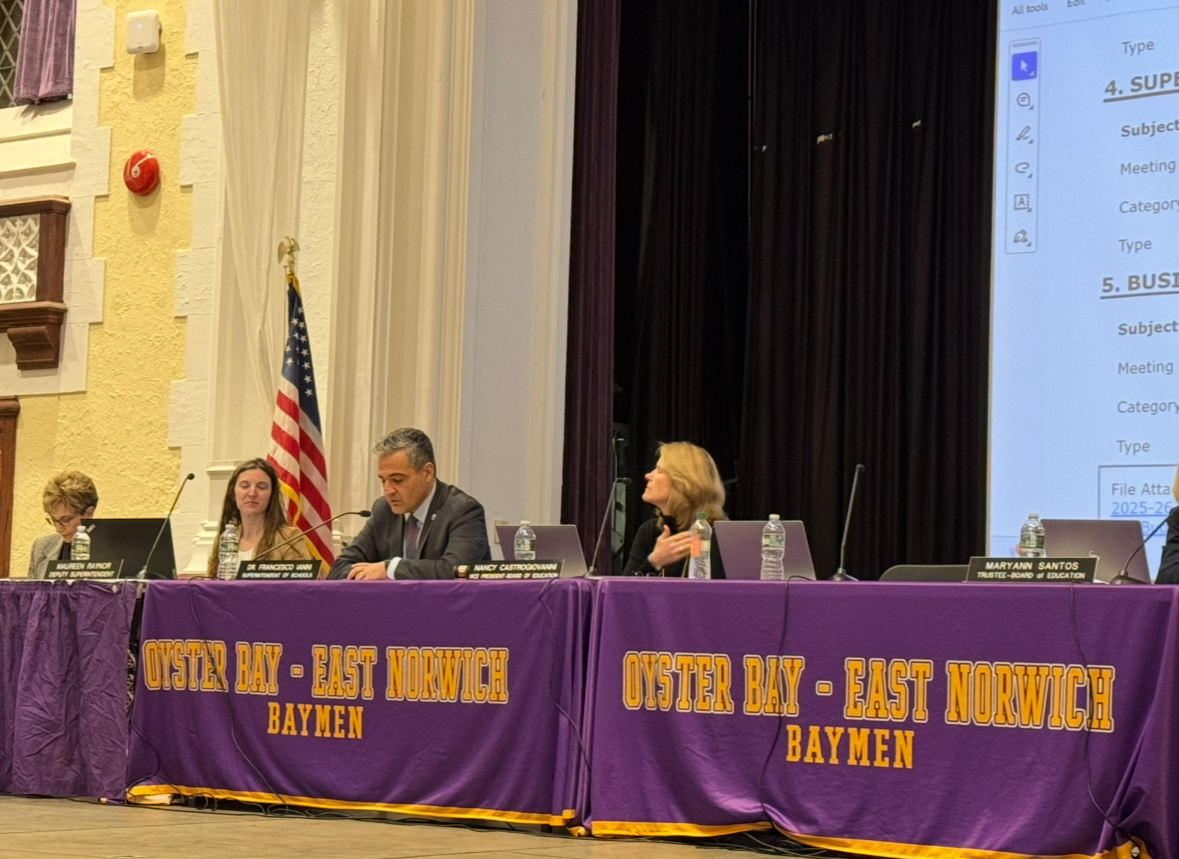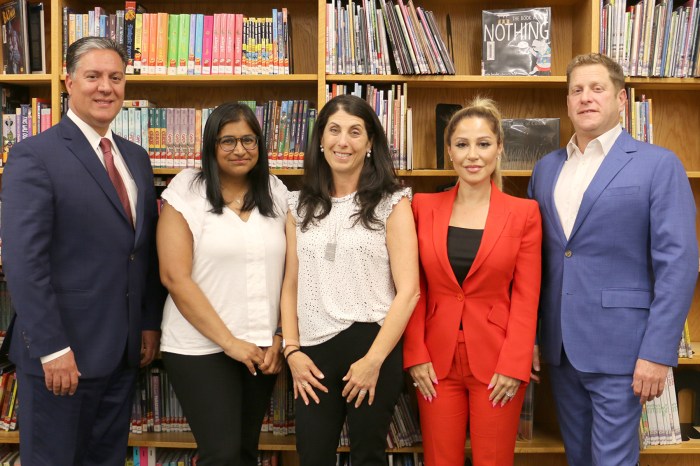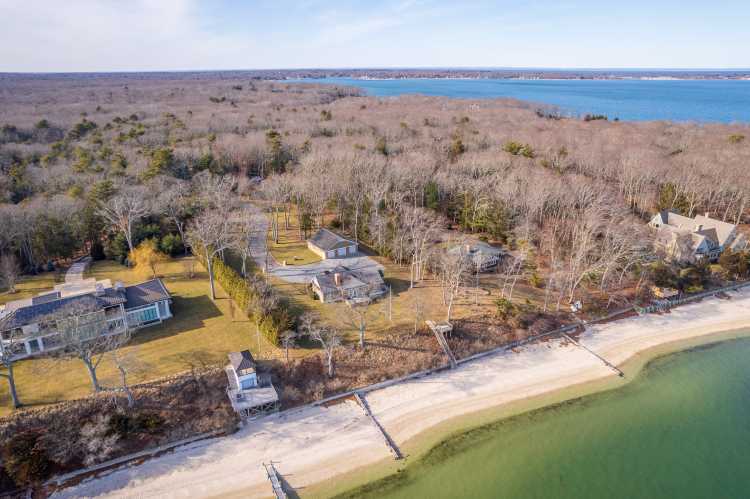Oyster Bay-East Norwich school officials anticipate a $67.7 million budget for the 2025-2026 school year, as presented at the Tuesday, March 25 board of education meeting.
“The work we do is all surrounding the vision of empowering students to achieve excellence,” said Deputy Superintendent Maureen Raynor. Raynor said the district aims to advance student programming while remaining fiscally responsible.
The proposed 2025-2026 school year budget of approximately $67.7 million would be a $2.1 increase over the 2024-2025 budget of $65.6 million.
As of the 2024-2025 district enrollment data, calculated by the state in October, the district comprises 1,345 students. If the proposed $67.7 million budget is approved, the district will spend approximately $50,402 per pupil if enrollment remains steady.
The district anticipates an approximate $59.8 million tax levy, marking a 2.91% increase from the current budget. The increase would amount to approximately $1.6 million if approved, as the previous levy was almost $58.2 million.
A 2.91% increase to the tax levy would meet the cap, which limits the maximum allowable increase to residents’ school and property taxes. The current year’s maximum tax levy increase is based off factors such as the current tax levy, tax base growth factor and PILOT payments.
“The majority of our revenue for the district is tax levy,” Raynor said.
Raynor said the tax levy accounts for approximately 88% of the district’s budget. Because it provides the majority of the district’s funding, she said it is important that the district remain fiscally responsible while maintaining programming.
Raynor said 5% of the budget will come from state aid and 7% from other revenue sources, such as capital reserves. The district expects to receive almost $4.4 million in state aid, a 7.05% increase from the previous year.
Raynor said the budget is divided into three expenditure categories: programming, administrative, and capital. The programming component, which includes general education costs, accounts for 76.1% of the proposed budget, an increase from last year’s approved 75.6%.
“We’re continuing to increase the program expenses while decreasing other expenses,” Raynor said. “Again, being fiscally responsible but making sure the students have everything they need.”
The budget will be adopted on April 22, followed by a budget hearing on May 6 and the budget vote on May 20.

































